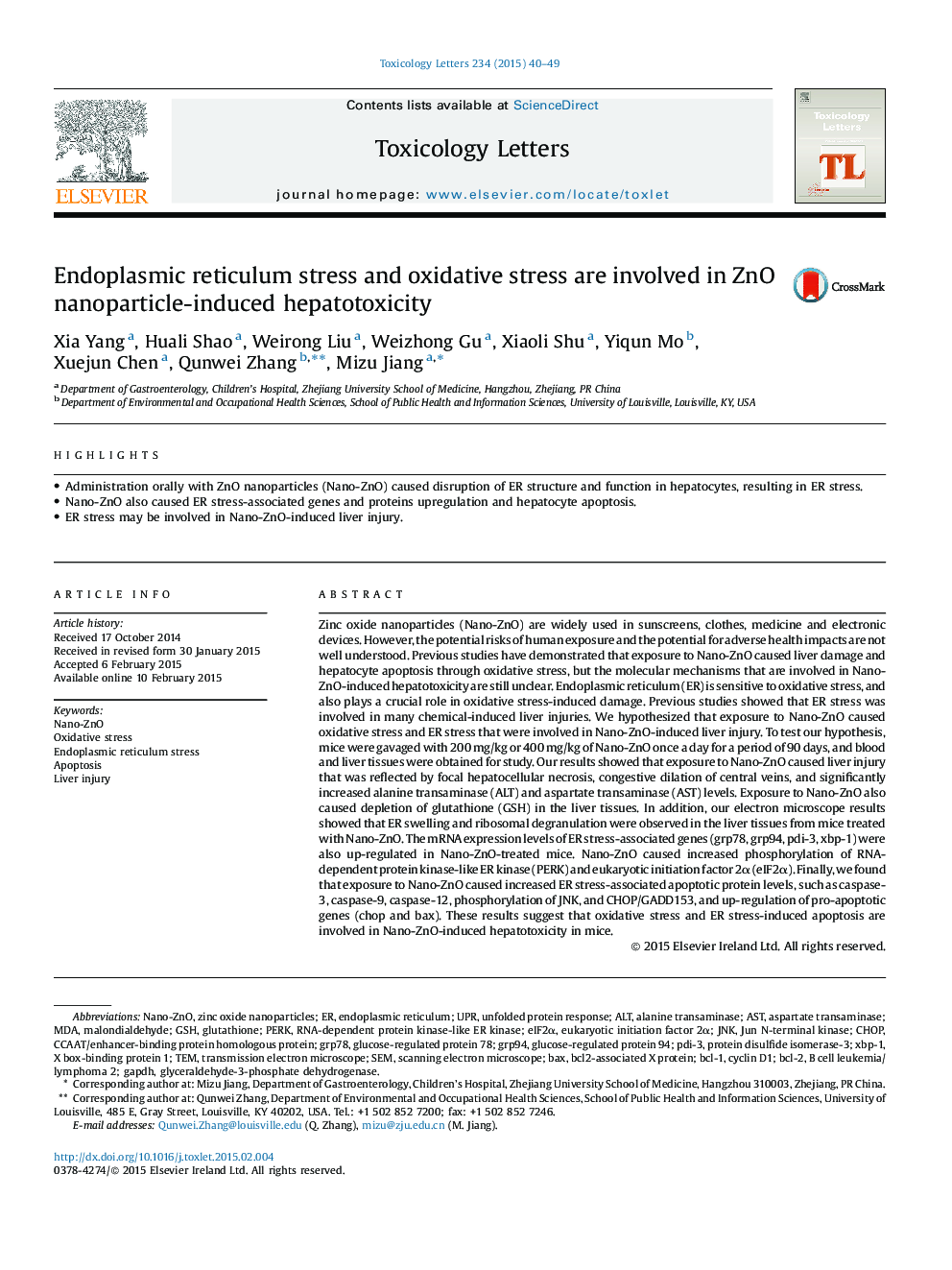| کد مقاله | کد نشریه | سال انتشار | مقاله انگلیسی | نسخه تمام متن |
|---|---|---|---|---|
| 2598849 | 1133153 | 2015 | 10 صفحه PDF | دانلود رایگان |

• Administration orally with ZnO nanoparticles (Nano-ZnO) caused disruption of ER structure and function in hepatocytes, resulting in ER stress.
• Nano-ZnO also caused ER stress-associated genes and proteins upregulation and hepatocyte apoptosis.
• ER stress may be involved in Nano-ZnO-induced liver injury.
Zinc oxide nanoparticles (Nano-ZnO) are widely used in sunscreens, clothes, medicine and electronic devices. However, the potential risks of human exposure and the potential for adverse health impacts are not well understood. Previous studies have demonstrated that exposure to Nano-ZnO caused liver damage and hepatocyte apoptosis through oxidative stress, but the molecular mechanisms that are involved in Nano-ZnO-induced hepatotoxicity are still unclear. Endoplasmic reticulum (ER) is sensitive to oxidative stress, and also plays a crucial role in oxidative stress-induced damage. Previous studies showed that ER stress was involved in many chemical-induced liver injuries. We hypothesized that exposure to Nano-ZnO caused oxidative stress and ER stress that were involved in Nano-ZnO-induced liver injury. To test our hypothesis, mice were gavaged with 200 mg/kg or 400 mg/kg of Nano-ZnO once a day for a period of 90 days, and blood and liver tissues were obtained for study. Our results showed that exposure to Nano-ZnO caused liver injury that was reflected by focal hepatocellular necrosis, congestive dilation of central veins, and significantly increased alanine transaminase (ALT) and aspartate transaminase (AST) levels. Exposure to Nano-ZnO also caused depletion of glutathione (GSH) in the liver tissues. In addition, our electron microscope results showed that ER swelling and ribosomal degranulation were observed in the liver tissues from mice treated with Nano-ZnO. The mRNA expression levels of ER stress-associated genes (grp78, grp94, pdi-3, xbp-1) were also up-regulated in Nano-ZnO-treated mice. Nano-ZnO caused increased phosphorylation of RNA-dependent protein kinase-like ER kinase (PERK) and eukaryotic initiation factor 2α (eIF2α). Finally, we found that exposure to Nano-ZnO caused increased ER stress-associated apoptotic protein levels, such as caspase-3, caspase-9, caspase-12, phosphorylation of JNK, and CHOP/GADD153, and up-regulation of pro-apoptotic genes (chop and bax). These results suggest that oxidative stress and ER stress-induced apoptosis are involved in Nano-ZnO-induced hepatotoxicity in mice.
Journal: Toxicology Letters - Volume 234, Issue 1, 2 April 2015, Pages 40–49